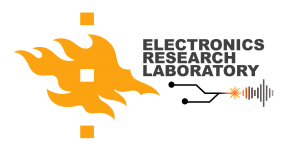Ultrasonic drug delivery and actuation
Advanced nanostructure technology for wound care
We use ultrasound-enhanced electrospinning to create (design, produce and verify) advanced nanostructures supporting controlled cell differentiation and proliferation. The technology allows producing next generation wound care patches for i.e. diabetic foot treatment.
Osteoarthritis
Osteoarthiritis (OA) is a significant musculoskeletal disease impacting large human populations, especially elderly people. Worldwide OA occurs in about 15% of men and 18% of women over 60 years. In the USA alone, the annual costs associated to OA exceed 110 Billion USD. The impact of OA is socioeconomic, and on quality of life of the patient due to pain and reduced or limited mobility. Disease progress reduces mobility and may lead to an endoprosthesis to relieve pain and to re-establish mobility. Currently, there are no techniques to cure OA although several attempts to develop techniques to slow down or to stop joint degeneration have been made. Therefore, there is a significant demand to develop techniques for OA therapy.
Localized drug delivery using ultrasound
In a clinical setting, ultrasound is typically used for imaging. However, it can also be used to conduct various therapeutic tasks e.g. lithotripsy, thermal tumor ablation, metastasis pain palliation and localized drug release of encapsulated drugs. These techniques rely on ultrasound’s mechanical or thermal effects.
By exploiting ultrasound’s mechanical impacts, one could potentially deliver drugs into articular cartilage in a localized manner. Our results suggest that certain ultrasound approaches can successfully deliver a drug surrogate into articular cartilage and subchondral bone locally without inducing major damage to the surrounding tissues. Succeeding to deliver a drug non-destructively and locally into diseased cartilage or bone could enable new treatment strategies for the management of OA.

Figure 1: We demonstrated to have delivered agents into articular cartilage (A,B) using ultrasound. As compared to adjacent tissue (C), treated tissue (D) was rich in contrast agent [1].

Figure 2: We demonstrated that ultrasound can deliver agents into nanoporous hydrogel (agarose) using ultrasound [1].
References
[1] Nieminen, H.J., Salmi, A., Rinta-aho, J., Hubbel, G., Wjuga, K., Suuronen, J.-P., Serimaa, R., Hæggström, E., “MHz Ultrasonic Drive-In: Localized Drug Delivery for Osteoarthritis Therapy?” IEEE IUS, July 21-25 2013, Prague, Czech Republic
[2] Fridlund, C., Nieminen, H.J., and Hæggström, E., “Cavitation-induced damage in articular cartilage” IEEE UFFC, July 21-25 2013, Prague, Czech Republic
[3] Nieminen, H., Herranen, T., Kananen, V., Hacking, S.A., Salmi, Karppinen, P., and Hæggström, E., “Ultrasonic transport of particles into articular cartilage and subchondral bone” IEEE IUS, October 7-10 2012, Dresden, Germany
Delivery outcome. Surrogate (phosphotungstic acid [PTA]) delivery was observed in X-ray microtomography (XMT) images of samples 1–3 and 5 (a–e, g) at the sample center (location of maximum delivery depth indicated with black arrow) compared with adjacent tissue (white arrow) after the sample was sonicated with intense megahertz ultrasound in surrogate immersion. In sample 4 (f), diffusion (potentially passive) is strong outside the ultrasound beam (purple arrow), but deeper delivery is seen at the sample center (blue arrow) compared with adjacent tissue (green arrow). The result suggests that ultrasound can deliver agents into articular cartilage and that the delivery is confined to the location of sonication.
Effects of acoustic levitation on the development of zebrafish, Danio rerio, embryos
(A). Measurement setup to characterize the ultrasound field: (i) Langevin (ultrasound) transducer, (ii) metallic reflector, (iii) laser Doppler vibrometer (i.e. LDV), (iv) laser beam, (v) vertical positions of the laser beam (dashed lines) and (vi) glass plate that reflects the laser beam back to the LDV. As the LDV is moved vertically, the sound field in the AL can be determined. (B): Maximum spatial average pressure through the levitator (left). Dashed lines (right, vii) represent the pressure nodes, (viii) is the E3 medium droplet in which the levitated embryo (ix) is immersed. Microscopy image (right) demonstrates a levitated embryo.
Multi channel acoustic levitator for scattering measurements
Objects are levitated in pressure nodes of standing waves. With superposition of multiple waves an asymmetric vortex trap is created enabling rotation control. The accurate control of the sample permits precise optical scattering measurements





